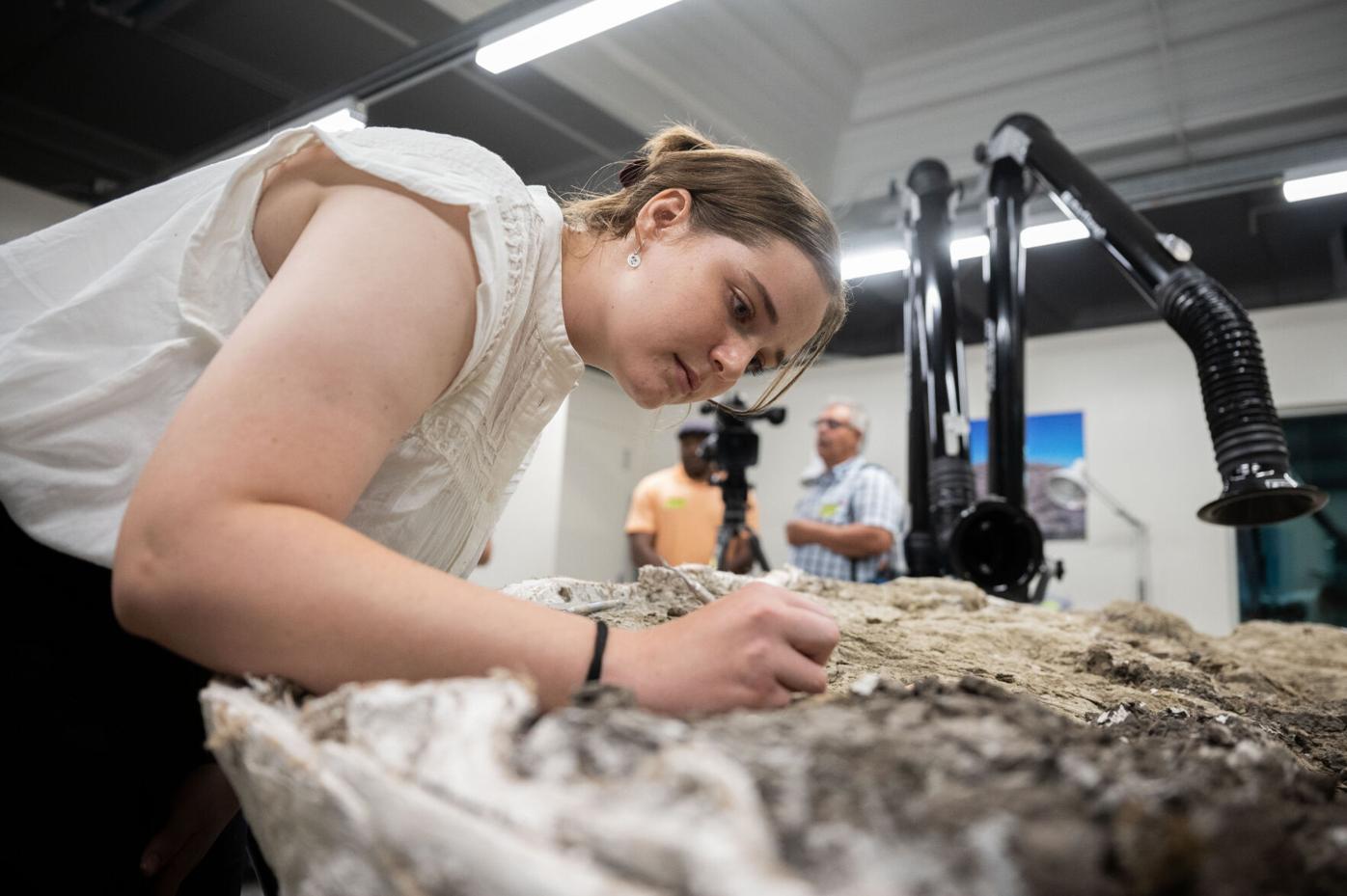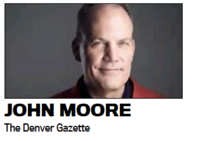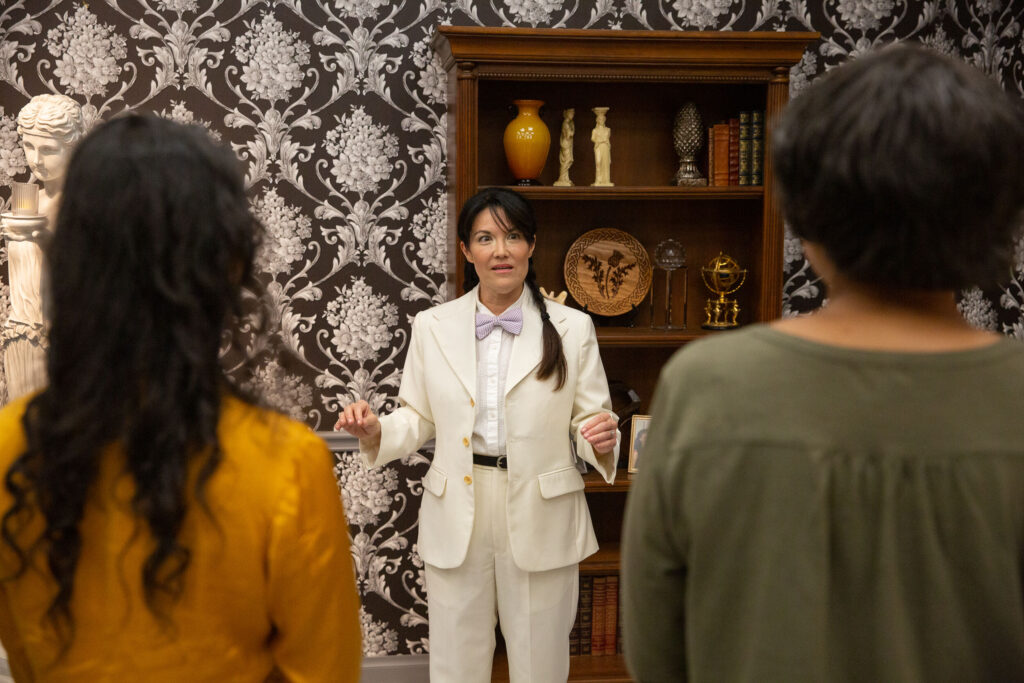SCFD executive director stepping down in 2025

The Denver Museum of Nature and Science leads all metro arts and sciences nonprofits with an annual infusion of $11 million from the Scientific and Cultural Facilities District, whose executive director, Deborah Jordy, is resigning next year. In the photo above, Alex Polich clears away loose dirt from around the bones of a juvenile T. Rex at the museum back in June 2024.
Stephen Swofford The Gazette

Deborah Jordy will step down after eight years as executive director of the Scientific and Cultural Facilities District, which has provided $84 million to more than 300 nonprofit arts and science organizations in the seven-county metro Denver area this year alone.
When her resignation becomes effective June 30, 2025, Jordy will move into a newly created senior adviser role that will be mostly focused on the SCFD’s next reauthorization vote in 2028.
The SCFD was created in 1987 as a voter-approved tax of one penny for every $10 spent in the metro area. That revenue is then distributed to qualifying organizations through a complicated distribution formula administered by each of the seven individual metro counties. Voters have reauthorized the SCFD three times, most recently by a 63%-37% margin in 2016.

SCFD Executive Director Deborah Jordy photographed in 2020.
“Serving the hundreds of SCFD-funded cultural organizations, and the residents of the district, has been the pinnacle of my professional career,” said Jordy, whose full focus, she added, has been on “breaking down barriers to access and building up district presence.”
Denver City Councilwoman Jamie Torres, also vice chair of the SCFD Board of Directors, said: “It is difficult to overstate the impact that Deborah has had on arts and culture in our region and beyond. While her daily leadership presence will be hard to replace, we look forward to keeping her on board to provide the advice and counsel that only she can.”
Under Jordy’s tenure, available SCFD funding has grown 50%, though she will only take credit for stewarding that additional revenue.
“We’ve seen tremendous growth at the SCFD because our metro economy has stayed strong, even through the pandemic,” she said.
Jordy is most proud of elevating awareness of the district through a variety of outreach and organizational efforts. Jordy’s legacy will largely be centered on establishing trust and enhancing relationships between the SCFD’s benefiting organizations, which are placed into one of three tiers based on budget size, paid attendance and free attendance.
Jordy shepherded the SCFD through the dicey COVID shutdown, when nimble accommodations had to be made for the fact that arts organizations were generating little to no revenue. Pivoting on revenue thresholds allowed the SCFD to deliver more than $74 million in general operating support during that time, which many organizations have credited for their survival.
“At a time when we were all struggling, we wanted to make sure we kept our organizations in business, and providing the public with programming and educational opportunities through the shutdown,” said Jordy.
The greatest source of controversy throughout the lifespan of the SCFD has been the perceived fairness of the pie-splitting between tiers.
Simply put: The only five Tier I organizations – the Denver Art Museum, Denver Botanic Gardens, the Denver Center for the Performing Arts, the Denver Museum of Nature & Science and the Denver Zoo – share 64% of all proceeds. (That’s more than $40 million.)
The 34 Tier II organizations receive 22% and Tier III, which constitutes about 275 qualifying organizations, receives 14%. Tier III distributions can range from $1,065 for the Denver Pops Orchestra to $309,000 for Dinosaur Ridge. On the other end, the Denver Museum of Nature and Science receives about $11 million.
Those proportions have been a source of tension since the SCFD’s inception, but that conflict was somewhat eased during the SCFD’s 2016 reauthorization campaign, when the SCFD developed a compromise called the Community Acts Fund, which essentially allows $750,000 a year to be reapportioned from Tier I to Tier III members, without having to rewrite the state statute.
While that agreement already was in place when Jordy took over the SCFD, she was charged with developing the implementation of that peacemaking policy with all parties.
Su Teatro Producing Artistic Director Tony Garcia, who has long led dissenting conversations about the equitable distribution of SCFD funds, said he has nothing but respect for Jordy.
“Whether or not Deborah and I agreed on stuff – and we often did not – we always remained friends,” said Garcia. “We always trusted that the other one was working for the overall benefit of the district.”
But, Garcia added, “There’s going to have to be a lot of changes,” under her successor. Among them is what he calls “The Tier II Problem.” Simply put: Organizations that generate $2 million a year graduate into Tier II. But Tier I membership is fixed and written into the statute, meaning: “Once you get into Tier II, you aren’t getting out,” Garcia said. And as more Tier III organizations grow and graduate into Tier II, the less funds there are to go around for those organizations.
“Tier II has really gotten banged up the most,” said Garcia. “I think we really have to address the issue of whether the tiered designations are still functional at all. I think Deborah is aware of that, and I think she’s a good person to serve in this new advisory position, because it’s going to take a lot of mediating and twisting and stroking and bringing groups together that have very different interests.”
SCFD Board Chair Jacki Cooper Melmed agrees Jordy is (still) the right person for that job.
“If you are working in the arts and culture arena in the Denver metro area, you know Deborah, have been mentored by Deborah or directly benefit from work Deborah has done,” she said.
Jordy was a boundary-breaking female curator at the Denver Art Museum at a time when there were only a handful of them in the country. She went on to lead the Arvada Center, the Cherokee Ranch & Castle Foundation and the Colorado Business Committee for the Arts.
“This was a difficult decision because I am passionate about my work, all the people I serve, and the importance arts and culture play in society,” Jordy said. “But you’re only as good as the people you surround yourself with, and I have had a stellar staff and board.”

“You’re only as good as the people you surround yourself with, and I have had a stellar staff and board,” said outgoing SCFD Executive Director Deborah Jordy, seated center.
John Moore is The Denver Gazette’s senior arts journalist. Email him at john.moore@gazette.com


















